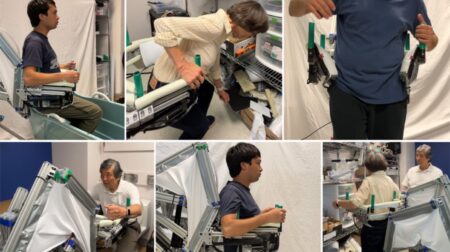Coventry-based Manufacturing Technology Centre (MTC) has developed a robot that can be trained to pick up unknown objects, reducing the need for labour-intensive manual data collection and labelling.
Project Viper demonstrated a technique for bin-picking using a trained model to find the best position to place a vacuum cup.
According to the researchers, conventional methods that use CAD data and high-cost sensors to accurately identify individual parts and test a range of pre-engineered grasps for feasibility, are expensive to implement and require substantial engineering time to programme.
Furthermore, existing approaches cannot be applied to objects that are not easily represented by CAD models, said MTC.
As such, during MTC’s study, a neural network-based approach was implemented using a PyTorch machine-learning framework to generalise learned behaviour to new scenes.
The team harnessed algorithms trained with open source manually labelled dataset and simulated dataset.
In addition, performance testing was completed using a low-cost depth camera and collaborative robot system – an affordable solution for many SMEs, according to MTC.
Mark Robson, senior research engineer, robotics, MTC, said: “This project demonstrates MTC’s determination to adopt academic developments with potential to transform robotics in manufacturing.
“The transferability of this technique to pick new objects will allow MTC to quickly test with customer parts and advise on implementation strategies.”

The project tested the system on range of objects including sheet metal components, fruit and cosmetics containers.
Its findings show that the models trained with manually labelled data and models trained with only simulated data achieved successful pick rates of 92% and 94%, respectively.
Dr Alejandra Matamoros, technology manager at MTC, said: “MTC robotics engineers are proving that design and development can be dematerialised in the creation of cost-efficient intelligent solutions to automate operations where predetermined programming is less viable.”







